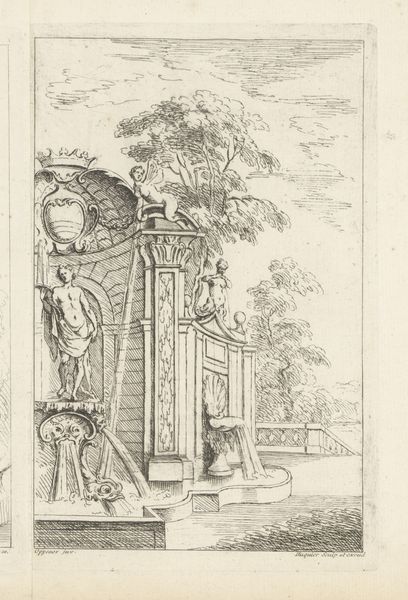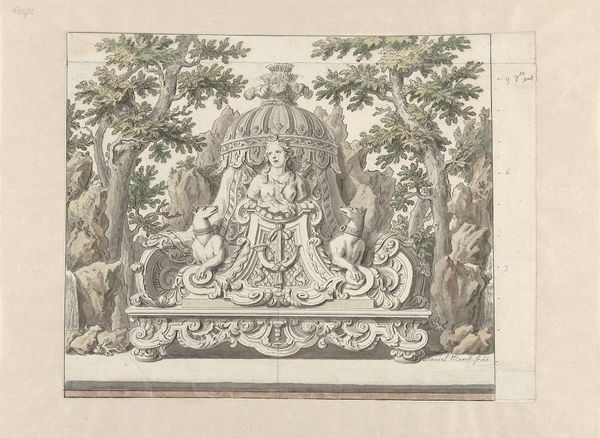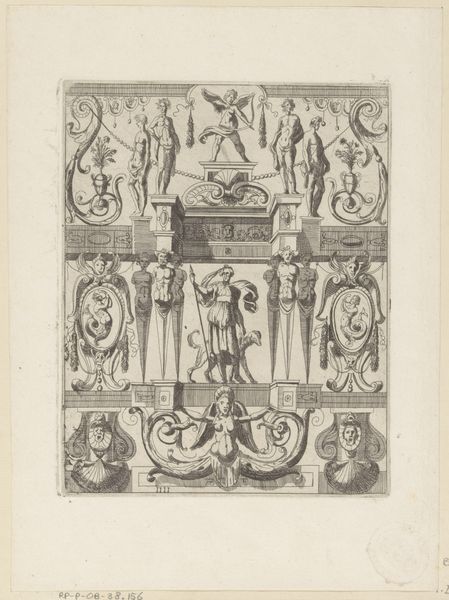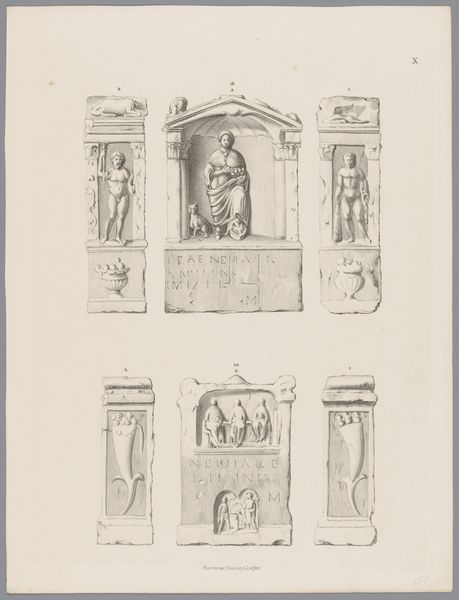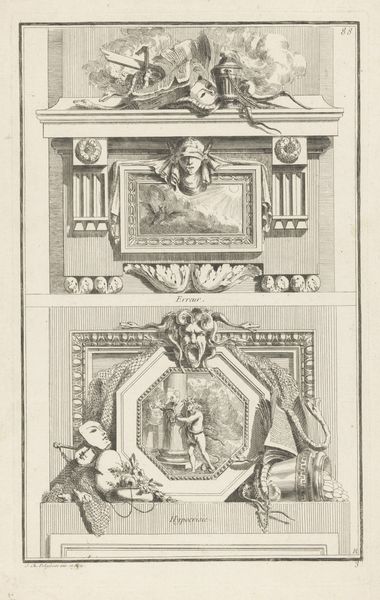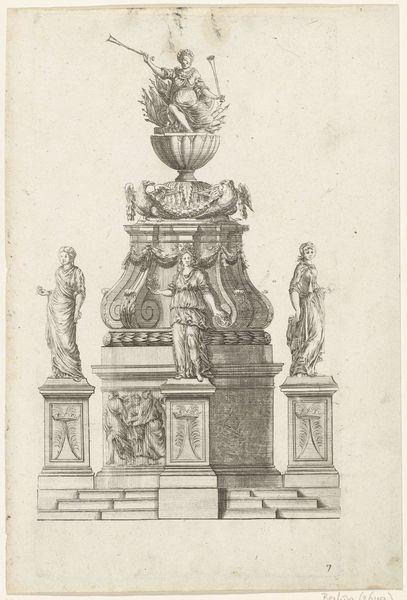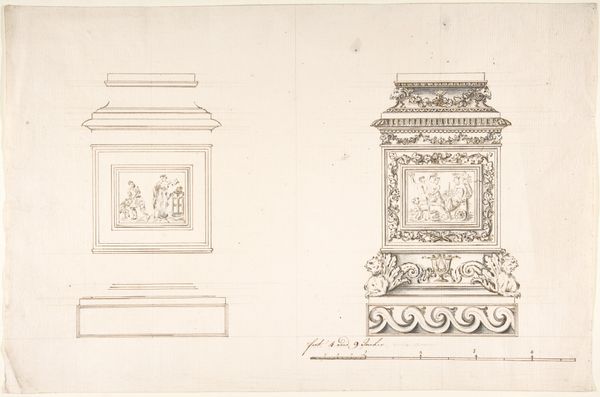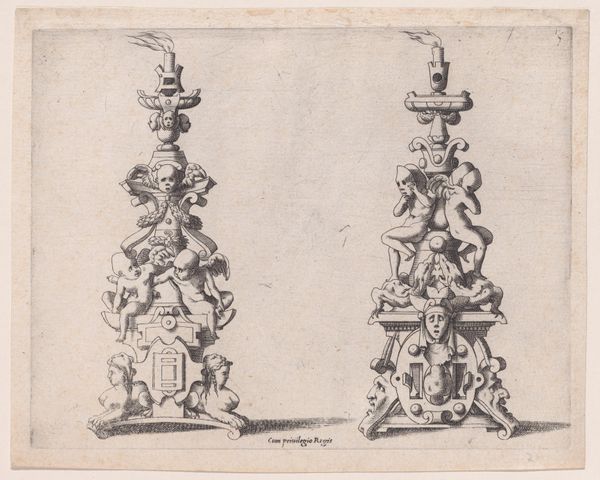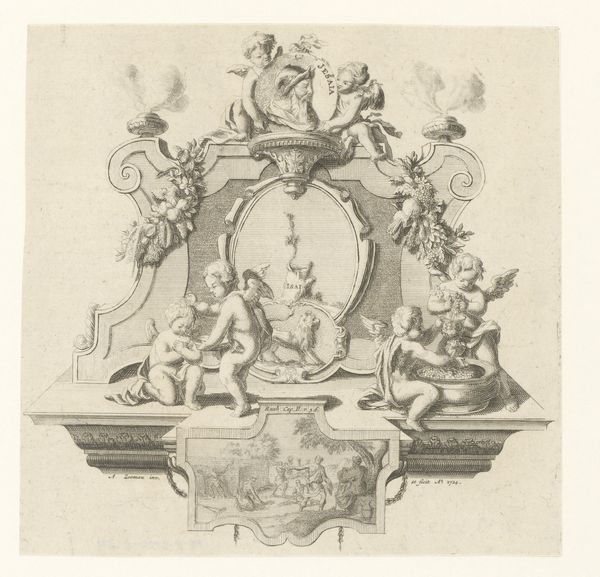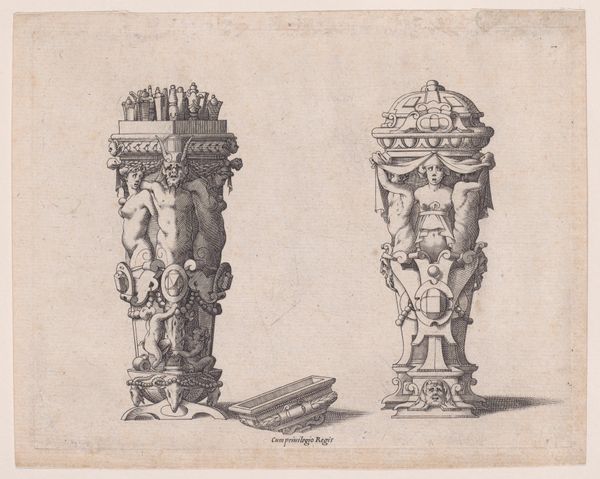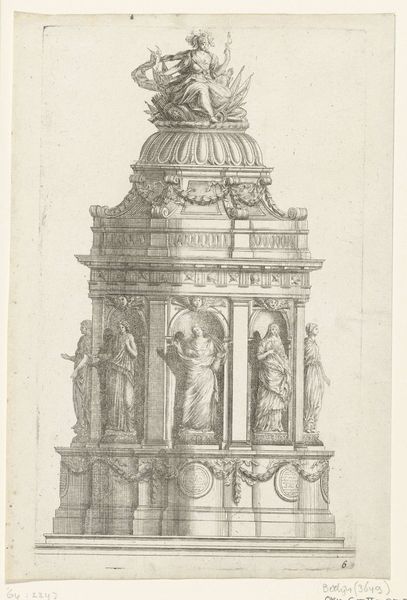
Dimensions: height 246 mm, width 384 mm
Copyright: Rijks Museum: Open Domain
Editor: Here we have “Designs for Two Garden Ornaments” by Daniël Marot, dating roughly from 1705 to 1769, an ink drawing on paper. It feels incredibly formal to me, but also kind of whimsical with the measurements noted directly on the sketch. How do you interpret this work? Curator: Well, considering Marot's role as a key designer for William and Mary, these aren't mere whimsical doodles. They're visualizations of power and control projected onto the landscape. We see Neoclassical elements, referencing antiquity, but shaped for a very specific political purpose. Notice the statues – idealized figures meant to embody specific virtues or perhaps allude to rulers. Editor: So, the gardens aren't just pretty, they’re saying something? Curator: Precisely! The geometric forms and carefully positioned statues would have been immediately legible to the educated elite, communicating order, reason, and, of course, the patron’s cultivated taste and authority. Who do you imagine would experience the impact of this designed space? Editor: Obviously, those with access. I guess it's easy to forget that even something as seemingly innocent as garden design can reinforce social hierarchies. Curator: Exactly. And this drawing lets us glimpse the planning stages of that reinforcement. It shows how design contributes to creating not only physical spaces but social and political ones as well. Editor: That’s a really interesting point. I’ll never look at a garden the same way again! Curator: Indeed. It highlights how art and design function within broader historical and social structures. Now, next time you wander in the park, consider whose vision it reflects and what that vision sought to communicate.
Comments
No comments
Be the first to comment and join the conversation on the ultimate creative platform.
